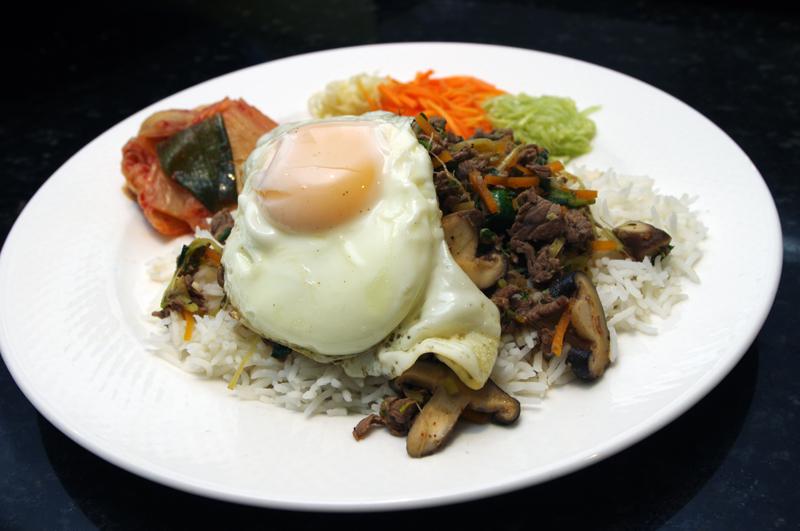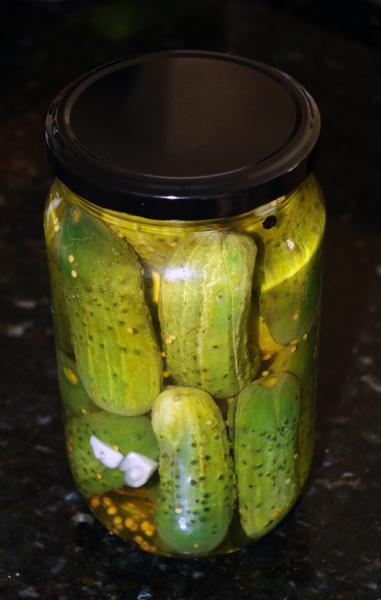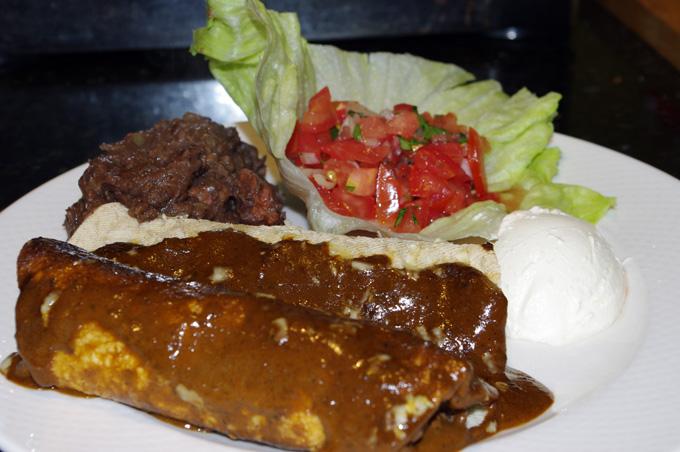-
Posts
2,606 -
Joined
-
Last visited
Content Type
Profiles
Forums
Store
Help Articles
Everything posted by nickrey
-
I use water from my kitchen filter unit. I know people have been discussing the taste as a reason for using filtered water but one of the reasons that I use it rather than tap water is to reduce the likelihood of scaling and other sediments inside my espresso machine.
-
I use a dash of it in Chili to give that "cooked over an open fire" taste. Works well.
-
-
I know that Marco Pierre White uses egg cooking as a basic skills test. For example, you may be asked to cook Eggs Benedict. This not only shows if you can poach an egg to perfection but also how well you can make a Hollandaise from scratch.
-
Now that is a huge surprise. I often think we have a little Tokyo around here in Neutral Bay/Crow's Nest. In Crow's Nest off the top of my head, there is Ju-Rin, Sakana-Ya, and Waqu, all of which appear in the Sydney Morning Herald good food guide. In Neutral Bay there must be seven or more Japanese restaurants/food shops within a 1km radius, including Jugemu & Shimbashi which is basically two Japanese style restaurants in one.
-
One of the reasons for using a long knife for filleting is the same as using a long knife for making Sashimi. If you use only one slicing cut, you will not wind up with broken flesh where you have sawed backward and forward with the knife. You basically work along the length of the knife during the filleting motion. Sashimi sliced in this way will glow; if it is sawed it will look dull. I use the same Victorinox blade referred to on 24Mar by FatGuy which is 20cm (8") and is sharp all the way along its length. I bought it after Testuya Wakada identified it as the blade he used in one of his cooking demonstrations. See for a demonstration of using the whole blade of a knife for filleting a salmon.
-
White miso in panna cotta has a savory connotation to it rather than sweet. If you want to balance the two, I'd suggest something like red bean paste, which is used in Asian desserts, rather than raspberry. Otherwise, why not go the whole savory route and find guidance in what is put into the Japanese custard called "Chawanmushi."
-
Very important difference. Mexican chorizo are normally the Spanish "chorizo fresco," which means that they need to be cooked and cannot be eaten raw. Other types of Spanish chorizo, which use smoked pork, can often be eaten without cooking. You need to know which one you have to avoid potential food poisoning..
-
How about things like baby squash that only take a wash and perhaps cutting in half for preparation? You can steam them and serve.
-
I cut square shapes, place a small cut in the salmon and the place it like a little sail in each fillet. Otherwise you could just lay it on the fillet. The skin is eaten like a little piece of pork crackling. I haven't tried it crumbled.
-
Why defrost in the microwave? The package is sealed so you can just put it in some warm water. The water conducts the heat much better than air and will defrost it before you know it.
-
Our greengrocer had some small pickling cucumbers and, well, you know the rest. I just had to buy some to try pickling them! Washed the cucumbers and packed them into a sterilised jar. Then I made the brine, which was 10% by weight Sicilian Sea Salt in an Australian White Wine Vinegar. Added some yellow mustard seeds, black peppercorns, crushed dried bay leaves and two sliced cloves of garlic. Heated this mixture up until just below boiling and then poured it over the cucumbers. They will sit in the cupboard for a few months before I try them. Can't wait. Here they are:
-
Considering that those of us who cook fish sous vide do so in "cryovacced" plastic for exceptional results, this seems counterintuitive to say the least.
-
One key type of rancidity comes from exposure to oxygen. This is why anti-oxidants are often used to delay the onset of rancidity. If the fat is in a vacuum-sealed packed bag it is highly unlikely to develop oxidative rancidity. Opening the bag is likely to let some oxygen in no matter how careful you are. For this reason, I would not recommend this action.
-
I have done duck confit for around 12 hours at 82 degrees. It worked well. The fat in the duck rendered out very well so I didn't both putting extra fat in.
-
In Terry Tan's excellent Asian Cook, he recommends your process of keeping the stems and leaves separate and cooking the former first for around two minutes on high heat before adding the leaves. He recommends stir frying garlic and ginger first very briefly until light brown before adding the stems and then the greens. Keep the food moving continually. The sauce is then added at the end (eg. 1 tbsp oyster sauce + scant 1/2 cup water). Stir fry until the liquid comes to a rapid boil. Then serve. In sum, stir fry the vegetables until cooked then add liquid for a rapid sauce making. Doing otherwise will braise the vegetables.
-
When you say REALLY hot, do you mean gas on wok burner on full, gas on normal burner on full, or electric on full? What sort of wok do you have? Carbon steel seasoned with oil? Non-stick? Cast Iron? Each of these will significantly affect the cooking method you use. Please let us know so we can suggest the appropriate one for you.
-
As far as I knew, aioli was a mayonnaise variant made with garlic crushed to a paste. After reading the comments here, I wasn't so sure. My Larousse Gastronomique says that the word itself comes from the combination of words meaning "Garlic" and "Oil" and that this was how it was originally made. The convention then became to add egg yolk, thus making the mayonnaise-like aioli that many of us are more familiar with. In the book, they give recipes for both an egg-free and a mayonnaise-like version.
-
Those of you who have tried fish cooked at a lower temperature will know what I mean by some people actively disliking what they term the "cold, weird textured, fish." For this reason, fish is the one item that I cook for a set time at a temperature higher than the target. In this way, the outside is served at a more conventional temperature while the inside just reaches target temperature. I cook salmon, for example, at 68 degrees celsius for seven minutes. Why this temperature and time? One of our most successful exponents of modern cooking techniques In Sydney, Brent Savage, uses this combination and if it works for him... People often say to me when I raise this topic: why do sous vide if you have to time it so carefully? The answer to my mind is that it combines the advantages of sous vide cooking (I bag it with olive oil, dill, and salt) with conventional techniques to give a more widely acceptable product.
-
So it seems that the only difference apart from variance in heat up and cool down properties is that there are no official time guidelines specified.
-
Given continued questions, I decided to go to the source document rather than trusting secondary reports. Interestingly, I could not find the term "pressure cooker" anywhere in the document. The following covers equipment that is not recommended: "Equipment and methods not recommended Open-kettle canning and the processing of freshly filled jars in conventional ovens, microwave ovens, and dishwashers are not recommended, because these practices do not prevent all risks of spoilage. Steam canners are not recommended because processing times for use with current models have not been adequately researched. Because steam canners do not heat foods in the same manner as boiling-water canners, their use with boiling-water process times may result in spoilage. It is not recommended that pressure processes in excess of 15 PSI be applied when using new pressure canning equipment. So-called canning powders are useless as preservatives and do not replace the need for proper heat processing. Jars with wire bails and glass caps make attractive antiques or storage containers for dry food ingredients but are not recommended for use in canning. One-piece zinc porcelain-lined caps are also no longer recommended. Both glass and zinc caps use flat rubber rings for sealing jars, but too often fail to seal properly. (p. 1-10)." It seems the machine that they don't recommend is a steam canner, which is nothing like a pressure cooker. Looking further, I found this reference which seems to be the one from which people extract their Internet-related wisdom. They state that "in the late 1980s the USDA published its recommendation to not use pressure saucepans (small cookers) for home canning." Interestingly, searching the USDA site I could find no such recommendation. The difference between a pressure cooker and a pressure canner seems to lie in the former having a recommended maximum water fill that is below the level for complete immersion of the jars. I suppose the question is what effect does total immersion versus being surrounded in superheated steam (steam under pressure that goes beyond boiling point) have on pressured cooking? Can't believe I fell victim to the web-based secondary reference sucker punch. If your pressure cooker consistently maintains pressure at 15psi, it will reach a temperature of 121C or 250F. This is the reference temperature used to determine commercial sterilisation processes [brennan, J.G. (Ed.). Food processing handbook. Wiley, 2006]. He goes on to provide a table of the times at which foods are held at that temperature for commercial purposes. This varies across food types so there is no one simple "hold it at x degrees for y minutes" statement possible. Issues arise concerning time to heat up, holding time, and cooling time. All of these are important factors in achieving commercial-equivalent sterility. The question of using a pressure cookers for canning seems still wide open. Recommendations against their use seem to hinge on processing times not having being formally calculated by the authorities. Personally, I'd say if you don't fully understand the processes involved get yourself a modern pressure canner, follow the instructions to the letter, and forget about using your pressure cooker for canning. Anyone else have some facts to present?
-
Not unsurprisingly, pressure canners are designed for the canning task; pressure cookers are not. Quoting from a reply of mine on this thread:
-
Mexican tonight. Beef Enchiladas in mole sauce with refried black beans and chorizo, tomato and onion salsa and sour cream.
-
In an earlier post (link here), I explored extracting osmazome from sous-vide cooked mince. The pictures go through the process of extracting the osmazome from the liquid in your sous vide bag. More recently, I just heat to coagulate the scum and then filter it through muslin only once. Like slkinsey, I also freeze this. This is done in an ice-cube tray with the resultant cubes stored in a zip-lock bag. You can then take out an appropriate amount to use in sauces.






